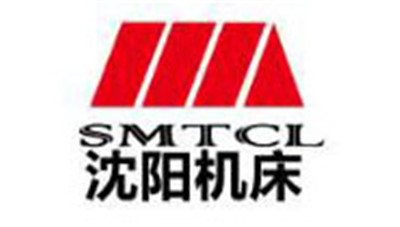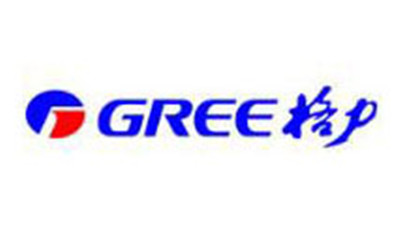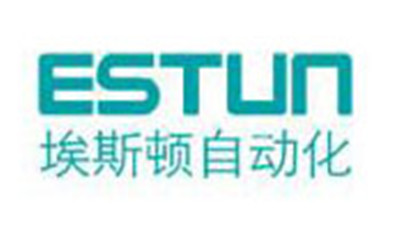Understanding the Basics of Ferrite Transformers for Modern Applications
Table of Contents
- Key Differences Between Ferrite Transformers and Traditional Transformers
- Performance Comparison: Efficiency Metrics of Ferrite vs. Iron Core Transformers
- Frequency Response: Ferrite Transformers in High-Frequency Applications
- Heat Dissipation: Analyzing Thermal Management Between Transformer Types
- Cost Analysis: Long-Term Savings of Ferrite Transformers in Modern Designs
- Market Trends: The Growing Demand for Ferrite Transformers in Electronics
- Exploring the Efficiency and Market Trends of Low Frequency Pin Transformers: Insights from Recent Industry Reports
- FAQS
- Conclusion
- Related Posts
In today’s fast-changing world of electronics, Ferrite Transformers have really become key players in a bunch of modern tech, from telecom setups to renewable energy systems. I came across a recent report by MarketsandMarkets that predicts the global transformer market will hit around USD 90 billion by 2025. What’s fueling this growth? Mainly advances in making them more efficient and smaller — and ferrite materials are right there in the mix, making a big difference. As for Dezhou Xinping Electronics Co., Ltd., they’ve been in the game since 2001 and are considered a leading high-tech company in China. They specialize in crafting precise electronic transformers, especially those high-performing Ferrite Transformers. Thanks to their great magnetic properties and low energy consumption, these transformers are super important for boosting the performance of modern gadgets. They bring together reliability and cutting-edge tech, exactly what’s needed to keep up with today’s rapid tech evolution.

Key Differences Between Ferrite Transformers and Traditional Transformers
 Ferrite transformers are becoming more and more popular in today's tech world, mainly because of their unique design and magnetic qualities. Unlike the old-school transformers that usually use laminated silicon steel cores, ferrite transformers rely on ferrite materials, which offer higher magnetic permeability. That basically means they’re way better at reducing core losses, making them perfect for high-frequency stuff like switching power supplies and RF circuits. Plus, they’re lightweight, so they help make devices smaller and more streamlined overall.
Ferrite transformers are becoming more and more popular in today's tech world, mainly because of their unique design and magnetic qualities. Unlike the old-school transformers that usually use laminated silicon steel cores, ferrite transformers rely on ferrite materials, which offer higher magnetic permeability. That basically means they’re way better at reducing core losses, making them perfect for high-frequency stuff like switching power supplies and RF circuits. Plus, they’re lightweight, so they help make devices smaller and more streamlined overall.
Another thing that sets them apart is the frequency range they operate in. Traditional transformers generally work best at lower frequencies, but ferrite transformers really shine at higher ones. This not only boosts efficiency but also gives engineers the freedom to design sleeker, more compact circuits—without sacrificing performance. And, because they tend to handle heat better, they’re often more reliable in tough environments. As more people look for efficient, space-saving power solutions, knowing the difference between ferrite and traditional transformers is pretty crucial for anyone involved in modern electronics design.
Performance Comparison: Efficiency Metrics of Ferrite vs. Iron Core Transformers
When you're looking at transformer performance these days, efficiency really matters. It’s a key factor that affects a bunch of modern electronic applications. You’ve probably heard about ferrite transformers—they're known for their great high-frequency performance and lower energy losses. In fact, they typically do much better than the old-school iron core types. According to a report from the International Electrotechnical Commission, ferrite transformers can hit efficiency levels of up to 95% at high frequencies. That’s a big jump compared to iron core transformers, which usually top out around 85%. The main reason? Ferrites have lower core losses, especially when you're working above 20 kHz. So, if you're designing something, keep the operating frequency in mind—you’ll want a ferrite transformer if you’re dealing with higher frequencies, since it can help keep things cooler and cut down on wasted energy.
And let’s not forget about the size and weight advantages. Ferrite transformers are much lighter—up to 50% lighter, actually—making them pretty much perfect for portable gadgets or devices where every bit of space counts. The IEEE Power Electronics Society backed this up in a recent study. They’re especially handy in renewable energy setups or electric vehicles, where saving weight and space is a big deal.
Tip: Always think about heat. Good thermal management can really extend the life and reliability of your ferrite transformers, especially in tougher environments. A little planning around heat dissipation can go a long way.

Frequency Response: Ferrite Transformers in High-Frequency Applications
Ferrite transformers are pretty much a key part of modern electronics, especially when it comes to high-frequency stuff. They’re great at handling those higher frequencies without losing efficiency—making them perfect for switching power supplies, RF amplifiers, and signal processing gear. Unlike your typical transformers, ferrite ones use a core made from ferrite material, which helps cut down on energy losses at those high frequencies. That’s super important because it means less wasted energy and less heat buildup, which is kind of a big deal when you’re dealing with small, high-performance circuits.
One of the coolest things about ferrite transformers in these high-frequency roles is their ability to respond over a wide range of frequencies. Thanks to the ferrite core’s permeability, they can work effectively across different signal conditions, and that means better modulation and overall performance. This flexibility allows engineers to design circuits that can handle changes in load or signal quality without breaking a sweat. Plus, they’re small and lightweight—so they’re a win when it comes to making devices more miniaturized, all while keeping signals solid and power transfer reliable.
As tech keeps pushing forward and everyone’s craving more efficient power options, ferrite transformers are only going to become even more important in high-frequency applications.
Heat Dissipation: Analyzing Thermal Management Between Transformer Types
When it comes to ferrite transformers, heat dissipation is honestly a pretty big deal. Their performance and lifespan really depend on how well you can manage the heat—especially since we're seeing them pop up more in modern stuff like renewable energy setups and high-frequency power supplies. Now, unlike your typical transformers, ferrite ones run at higher frequencies, which means they can be smaller and lighter—pretty awesome, right? But—and there’s always a but—this higher frequency also means more heat, and if you don’t handle that properly, it can cause big problems.
A report from the Electronic Components and Technology Conference points out that ignoring proper thermal management can cut a transformer’s life in half. That’s a huge deal and just goes to show how important it is to have good heat dissipation strategies in place.
So, if you really want to keep things cool, consider some smart cooling options—like forced air or even liquid cooling—especially when running at high loads. There’s also research from the Power Electronics Society that shows using the right thermal interface materials can boost heat transfer efficiency by around 30%. That really helps in keeping temperatures down. Oh, and adding temperature sensors inside the transformer can be a game changer because you’ll get real-time data, so you can tweak cooling efforts before things get too hot.
When picking out a ferrite transformer, it’s worth taking a peek at its thermal specs. Focus on ones with lower core and copper losses—these directly affect how much heat is generated. Cutting back on losses doesn’t just improve efficiency; it also keeps the transformer cooler and helps it last longer. Basically, the better you’re at managing heat, the healthier and longer-lasting your transformer will be.
Cost Analysis: Long-Term Savings of Ferrite Transformers in Modern Designs
Ferrite transformers are really starting to catch on in modern electronics, and it's not just because they perform well—it's also because they won’t break the bank. When you’re thinking about using them, one of the biggest perks is the long-term savings they can offer. Sure, they might cost a bit more upfront compared to your typical transformers, but their efficiency and durability pay off in the end. They’re great at handling higher frequencies, which means less energy wasted and better heat management. All that adds up to lower electricity bills over time.
A good tip? When you're considering ferrite transformers, it’s important to think about what your specific project needs. Doing a proper cost analysis really helps—you might find that the energy savings and lower maintenance costs make them a smarter choice in the long run. Also, picking the right materials and design can make these transformers even more cost-effective for your application.
And there's more! Ferrite transformers tend to produce less electromagnetic interference, which is better for the environment. So, if you're working on a project where sustainability matters, these might actually be the way to go. Using them can also help your brand look more eco-friendly in the eyes of consumers, which is a pretty big plus today. All in all, investing in ferrite transformers isn’t just good for your wallet—it’s a pretty responsible move environmentally too.
Cost Analysis: Long-Term Savings of Ferrite Transformers in Modern Designs
Market Trends: The Growing Demand for Ferrite Transformers in Electronics
You know, the market for ferrite transformers is really picking up speed lately. That's mainly because electronics are advancing so fast, and everyone's so eager for energy-efficient solutions. With industries moving towards renewable energy and electric vehicles, there's definitely a bigger need for high-frequency transformers that can handle different loads without wasting too much energy.
Ferrite transformers are becoming pretty popular because they’re small and lightweight—perfect for stuff like power supplies and telecom gadgets.
Lately, manufacturers have been trying out all sorts of innovative designs and using new materials to boost performance. It’s no surprise they’re pretty much a staple in modern electronics now. The push to make devices smaller and more efficient means transformers need to operate at higher frequencies without compromising quality. That’s what consumers want too—reliable, efficient gadgets.
All of this is fueling even more demand across different sectors. Looking at these trends, it seems like ferrite transformers are here to stay and will play a major role as electronics keep evolving.
Exploring the Efficiency and Market Trends of Low Frequency Pin Transformers: Insights from Recent Industry Reports
As the demand for efficient and reliable power solutions continues to grow, the market for low-frequency pin transformers is seeing significant developments. Recent industry reports indicate a consistent rise in the adoption of these transformers, driven by their high safety performance and operational efficiency. The latest models are engineered with first-level complete isolation, ensuring maximum protection against electrical hazards in various applications. This focus on safety is underscored by their dielectric strength of 3750VAC, making them a preferred choice in sectors that prioritize secure electrical systems.
Moreover, the utilization of high-quality silicon steel sheets with high magnetic conductivity plays a crucial role in minimizing energy loss and enhancing overall efficiency. Low-temperature rise during operation is another critical feature that sets these pin transformers apart. Operating at standard frequencies of 50/60Hz, they are compatible with many existing systems while offering improved performance. Comprehensive reports highlight that adherence to strict international standards, such as EN61558-1 and GB19212 series, further assures users of their quality and reliability.
The trend towards adopting advanced technologies in low-frequency pin transformers is evident, as manufacturers increasingly employ vacuum impregnation techniques to enhance insulation properties. With an insulation class of B, these transformers consistently meet and exceed industry requirements, thereby driving their integration into modern power infrastructures. As a result, organizations looking to optimize their energy management systems are increasingly turning to these transformers, informed by data that reflects significant market growth and positive performance metrics.
FAQS
: Ferrite transformers primarily use ferrite materials, which provide higher magnetic permeability compared to the laminated silicon steel cores found in traditional transformers.
Ferrite transformers excel at higher frequencies, whereas traditional transformers perform optimally at lower frequencies, making ferrite transformers more suitable for high-frequency applications.
Ferrite transformers can achieve efficiency rates of up to 95% at high frequencies, while traditional iron core transformers typically reach around 85%.
Ferrite transformers have a higher power-to-weight ratio and are up to 50% lighter than equivalent iron core transformers, making them ideal for applications where space and weight are critical.
Ferrite transformers offer reduced core losses, better thermal management, and a more compact design, which enhances efficiency and reliability in demanding environments.
It's important to consider the operating frequency to maximize efficiency and evaluate thermal characteristics to ensure proper heat dissipation strategies.
Conclusion
Lately, we've been seeing a real uptick in the demand for Ferrite Transformers, especially with today’s electronics and gadgetry. Honestly, these transformers have some pretty clear advantages over the old-school iron core ones — they’re more efficient and actually perform better at high frequencies. That means they respond way better to the fast-changing signals in modern tech, making them a perfect fit for the latest electronic designs that run at really high speeds. Plus, heat management is a big deal, right? Luckily, Ferrite Transformers tend to handle heat better, which helps them last longer and stay reliable across different uses.
Here at Dezhou Xinping Electronics, we’re proud to be a high-tech enterprise right at the cutting edge. We specialize in designing and manufacturing precision Ferrite Transformers that are perfectly tailored for today’s tech demands. With our focus on innovation, we seriously consider the long-term savings and benefits of using Ferrite Transformers in products, making them a smart choice for manufacturers looking to boost efficiency and performance. The trend in the market looks super promising too — it’s clear Ferrite Transformers are becoming essential in this fast-moving electronics world.
We’re really excited about where things are headed, and it’s cool to see these transformers take on a bigger role in shaping the gadgets and devices of the future.
Related Posts
-

Understanding the Challenges Faced with Converter Transformers in Industrial Applications
-

How to Choose the Right Constant Voltage Transformer for Your Industrial Application
-

10 Essential Insights for Sourcing the Best Distribution Transformer Worldwide
-

The Future of Innovative Applications in Aluminium Coil Technology
-

Unlocking the Advantages of Axial Leaded Power Ferrite Bead Inductors for Modern Electronics
-

Innovative Solutions for Converting 120v To 12v Transformer Power Needs
Blog Tags:


















